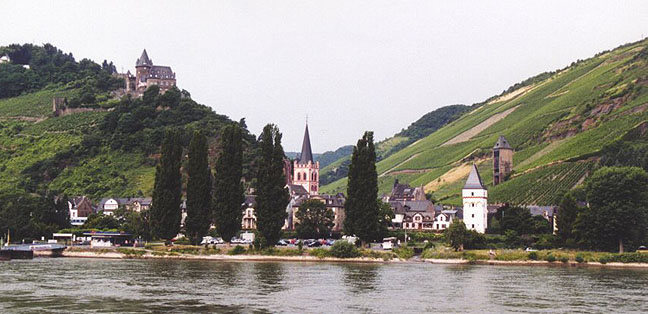Rolf Binder Halliwell 2005
Country of origin: Australia
Territory: South Australia
Appellation: Barossa Valley
Varietal: 60% Shiraz & 40% Grenache
Stats: 14.5% ABV
Cost: ~$25 (no idea where I got this)
Appearance: Dark brillant red, clear, good legs
Aroma: Chocolate, stewed plums, black cherries, strong oak flavors with coconut & vanilla predominating
Taste: Smooth & supple. Moderately light tannins with muted flavors of black fruits & chocolate. Nice lingering (and smooth) after taste.
I've tried to find some additional information about this wine, but interestingly the Rolf Binder website doesn't contain tasting notes for the 2005 Halliwell. The description on Wine.com states that the Grenache comes from the "Western Ridge" estate vineyard located along the edge of the Marananga bowl in the western rim of the Barossa Valley, while the Shiraz is purchased from Rolf's neighbors. I can't find independent verification, so for now, I'll go along with them. Wine.com also had Robert Parker's review, which I found humorous:
"A sexy, knock-out effort for drinking over the next 5-7 years is the 2005 Shiraz/Grenache Halliwell. This aromatic blend of 60% Shiraz and 40% Grenache offers up notes of blueberries, raspberries, cherries, earth, spice, and a hint of oak. It is full-bodied with juicy, concentrated flavors, supple tannins, and a velvety, opulent finish."
Robert Parker's The Wine Advocate, 92 Points
I'm guessing that he rated this wine upon release in 2007 or so. I'd have to disagree with some of his review, as I found the oak to be very strong and almost masking the duller fruit flavors. That was rather surprising since the screw-cap closure would have led me to expect a much more fruit-forward style. Perhaps the wine has already reached its peak and is declining, or perhaps Robert's insured palatte is more discriminating than mine. :)
I did enjoy scoping around the Rolf Binder website. There's a lot of viticulture, harvest, and winemaking info and pictures posted. Interestingly, I learned that the winery was originally named Veritas in 1955, but changed to "Rolf Binder at Veritas" in 2005 to avoid marketing confusion with another Veritas wine brand in the US. That of course led me to search for the competition, but the only US Veritas winery that I turned up with a quick Google search was the Veritas Winery of Afton, Virginia. If this was the other brand, it's rather interesting that the VA winery that only started in 2002 could force a much longer established Australian winery to change the name of their brand, but that's up to the lawyers to settle.
Salute,
a Wine Student



